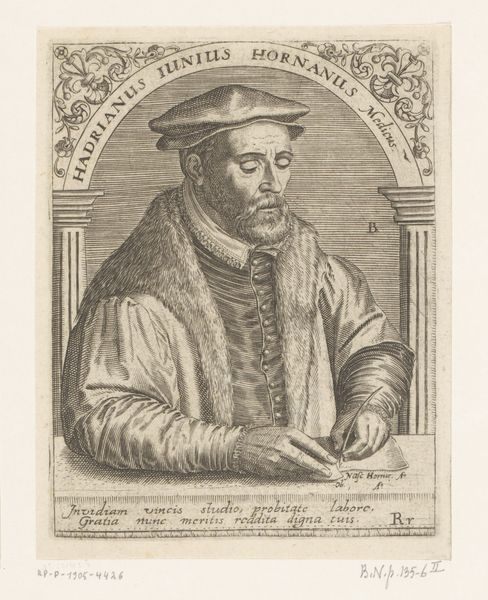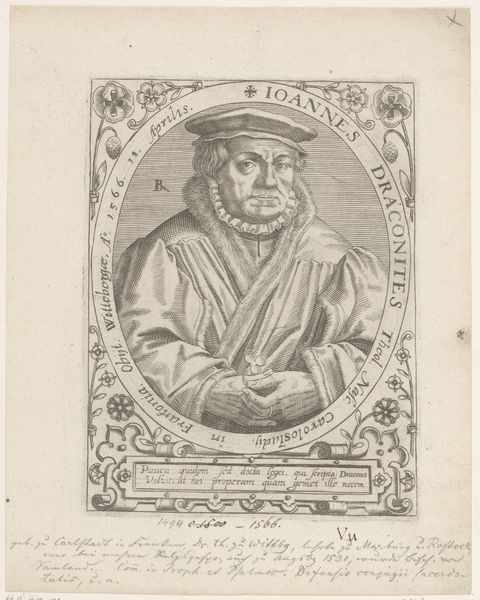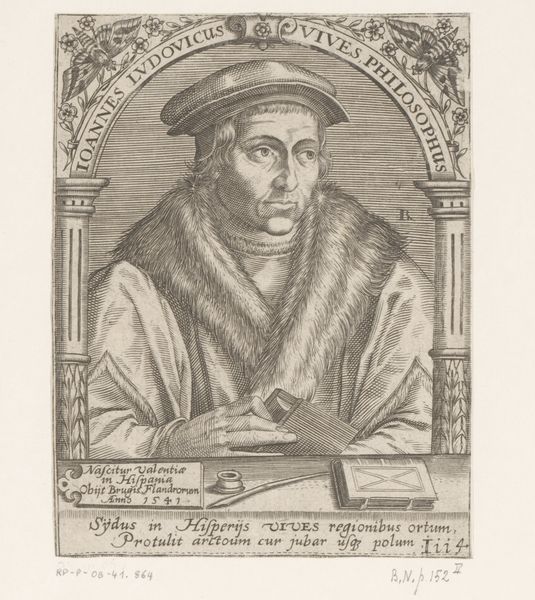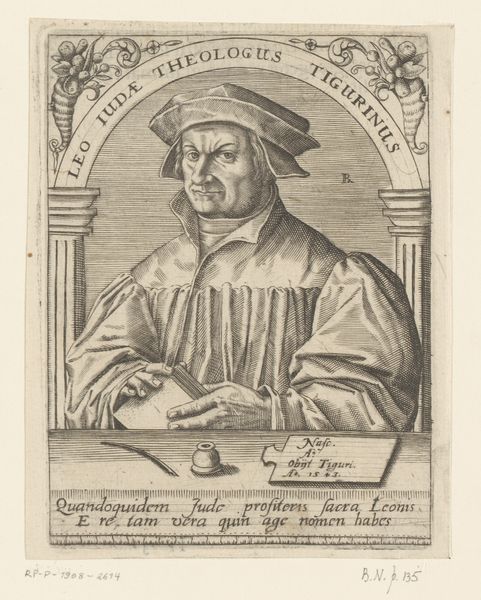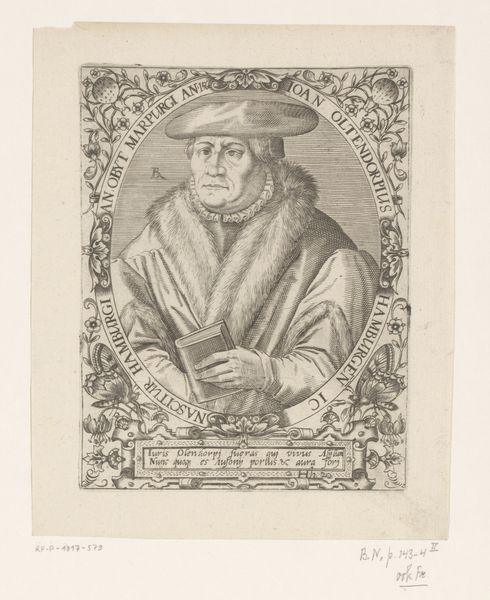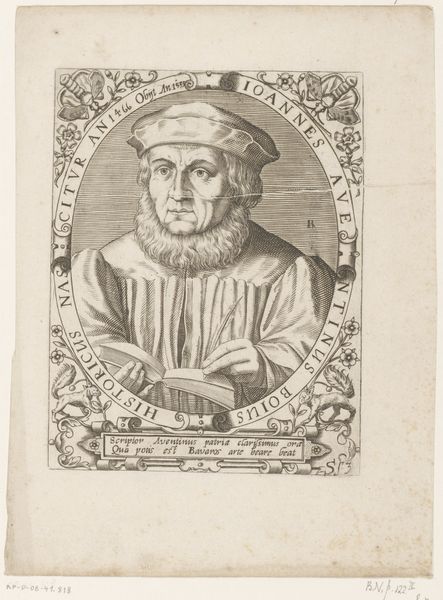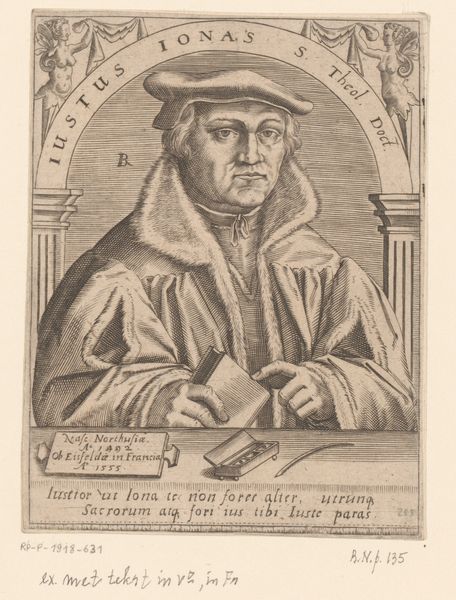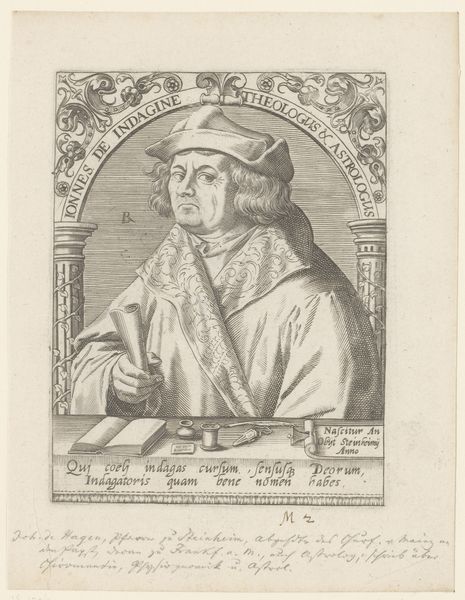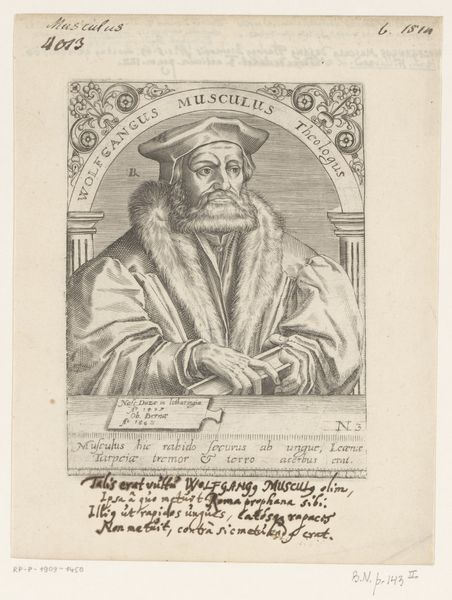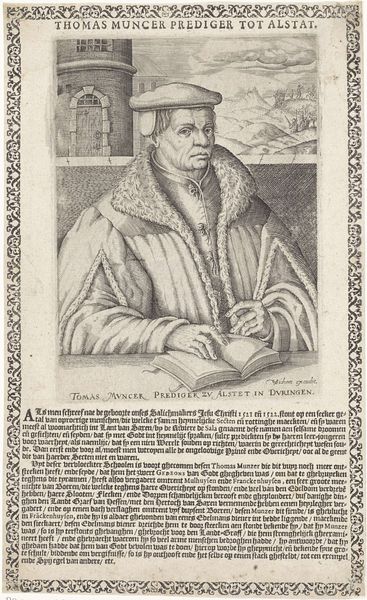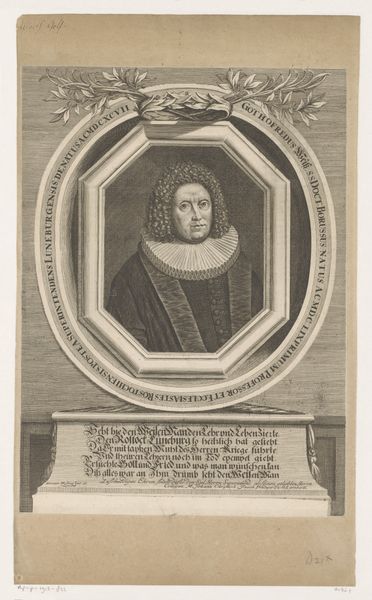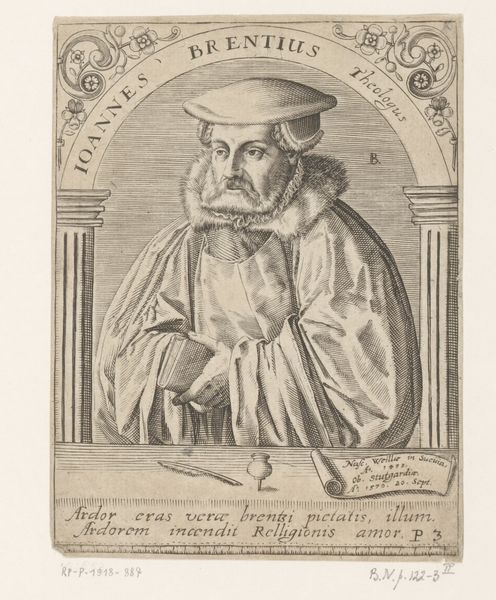
etching, engraving
#
portrait
#
etching
#
11_renaissance
#
history-painting
#
northern-renaissance
#
engraving
Dimensions: height 141 mm, width 107 mm
Copyright: Rijks Museum: Open Domain
Curator: Look at this intense portrait of Thomas More. Created between 1597 and 1599, this engraving and etching by Robert Boissard captures the gravity of a man who was both a celebrated statesman and a controversial figure. Editor: It's stark, isn't it? The lines are so sharp and precise, especially around his face. There's something unsettling about how composed he appears, almost like a mask. And the textures! The fur looks heavy, real. Curator: That precision speaks to Boissard's skill and the values of the Northern Renaissance, doesn't it? More's image is framed by text and allegorical imagery – birds perched on ornate columns – all of which communicate layers of meaning related to his life and legacy, and also that specific context when powerful men were associated with a type of stoicism. The inscription below even references his execution in 1536, highlighting the drama and tension of his life in service and disagreement. Editor: Exactly, and focusing on materials, that level of detail would require tremendous skill with the engraver's tools. How many impressions could someone realistically make before the plate deteriorated? How were these prints consumed, disseminated? Where would one see these originally? It makes me consider the value we assign not just to "high art" portraiture, but also the more functional nature of reproductive prints as a commodity. The book open in the lower portion indicates More’s scholarship, of course, but also the printing trade during this period and, also, its technological innovation in mass distribution of texts. Curator: Considering your approach and that lens of historical context that foregrounds the production process is, of course, deeply intertwined with how More's image was consumed and perceived in different social strata. Was this for the elite, for those politically aligned, or did its circulation extend beyond? We see those questions resurface again today in how figures of power are presented to specific audience and how such portrayals align with political narratives. What about today's visual representation strategies? This image becomes quite loaded... Editor: Absolutely. Looking closely like this forces me to recognize those long threads of political influence. Thinking about it further, it does resonate quite powerfully. It’s sobering to remember those complex intersections of power, craft, and how materials shaped both identity and propaganda.
Comments
No comments
Be the first to comment and join the conversation on the ultimate creative platform.
